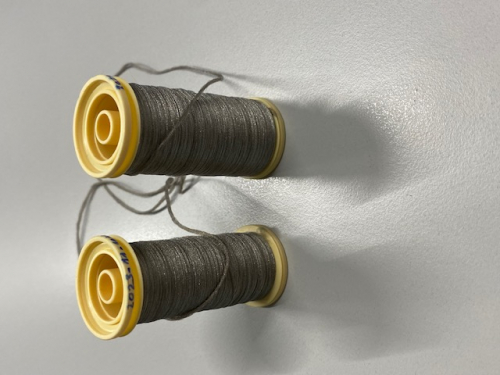Desired outcome
In recent years Beti has been focusing successfully on increasing production efficiency and product quality. The general trend toward more technical end-product - metallized/conductive yarns.
The production and commercialization of conductive yarns has been a hot topic for at least 15 years now. Vast development projects have led to a wide variety of conductive yarns for a very large variety of market application.
As yarn development and production is BETI's core competence, metallized coated yarn types show realistic business potential.
Initial Problem Description
The market for metalized conductive yarns is still very fragmented and a non-mature market. The potential to grow is definitly present, despite 20 years of intensive development and business activity, metalized conductive yarns are still acting similar to a fresh market.
The team should analyze the market: the potential market size, key players on the market (competitors), identify the users of conductive yarns, identify the supply chain of conductive yarns.
The team should design a marketing campaign for conductive yarns.
Context
Conductive yarns are a new and innovative product, and many potential customers may not be aware of its existence or applications. This may make it challenging to generate initial interest.
Conductive yarns are made up of expensive metals like silver, copper, and stainless steel, which can make them more expensive than traditional yarns. This may deter some potential customers from considering them as an option.
The use of conductive yarns requires technical expertise and specialized equipment, which may limit their use to certain industries or businesses. This may make it challenging to generate a large customer base.
While conductive yarns are a new and innovative product, there may be other companies that are already offering similar products. This may make it challenging to differentiate ourselves and stand out in a crowded market.
Conductive yarns are currently being used in a few specific applications like wearable technology, medical textiles, and smart textiles. This may limit their potential customer base and make it challenging to expand their use to other industries.
Connection to cross-cutting areas
Conductive yarns can be used to create energy-efficient textiles, such as heated clothing that reduces the need for indoor heating, or smart lighting systems that automatically adjust to the user's needs, thereby reducing energy consumption.
The integration of conductive yarns into textiles also supports Industry 4.0 by enabling the creation of connected and autonomous textile production systems. For example, conductive yarns can be used to create smart fabrics that can communicate with machines and robots, enabling more efficient and flexible manufacturing processes.
Conductive yarns can be used to create smart textiles that can monitor and transmit data about the wearer's health or environment, enabling new opportunities for personalized healthcare, wellness, and sustainability.
Input
The market for metalized conductive yarns is still very fragmented and a nonmature market. The potential to grow is definitely present, however despite 20 years of intensive development and business activity, metalized conductive yarns are still acting similar to a fresh market. Besides the market for EMS/anti-static products and anti-bacterial solutions, all other
segments are still in strong evolution. Also, the influence of new-type competitive technologies is being felt.
Expectations
To identify the potential users of conductive metalized yarn. What is their yearly consumption? Is consumption increasing? Price of conductive yarn, margins.
How do customers select supplier? What would convince them to change a supplier? In what field they use conductive yarn (heating, conductor, sensor, electro-magnetic shielding, anti-bacterial, ....)
Desired Team Profile
The team members should have skills in textile technology - smart/e-textiles, We know that this skills are hard to find, so any technical background would work as well.
The team should have marketing skills, creating market reports
Besides above team should have skills in project management, strategic thinking and data analysis.
Additional Information
Available data on conductive textiles for 2018 is estimating the worldwide market for all types to 1,7 billion dollars. In Europe, the companies who are metalizing/coating conductive yarns have an estimated market of 15-20 mio dollars max. This marginal volume will be growing steadily in the coming years. How much?
Related Keywords
About Petra Kovačič
Beti d.o.o. is a company that operates in the field of textiles focusing on sustainability and innovations. Production plant with 105 employees is located in Slovenia, Europe. The company is known for its customer-centric approach and high-quality products, which have earned them a reputation as a reliable and trustworthy partner all over the world. Beti d.o.o. has a team of experienced professionals who are committed to delivering innovative solutions that meet the unique needs of their customers.

You need to sign up to apply to this challenge and submit a motivation letter!

Learn more about the topics and find team members!
Help
Need help submitting your proposal or have questions regarding this Open Innovation Challenge?
Contact support

